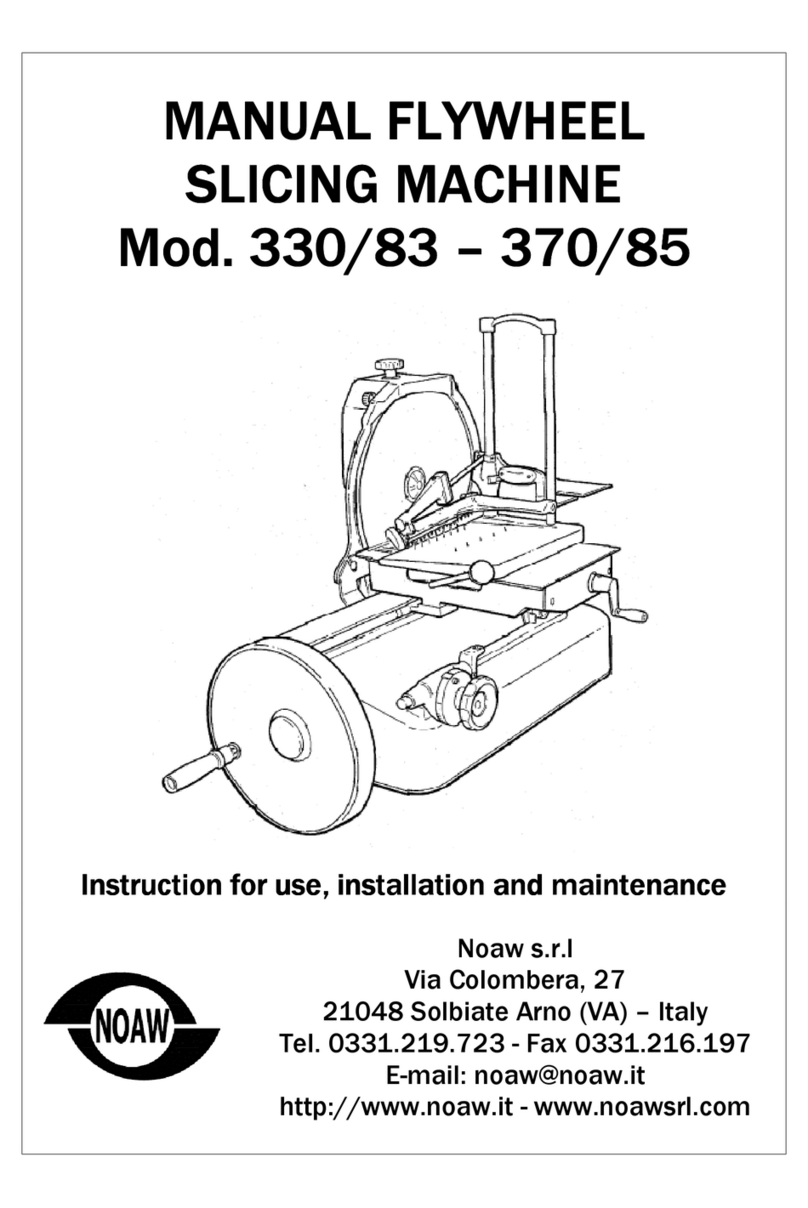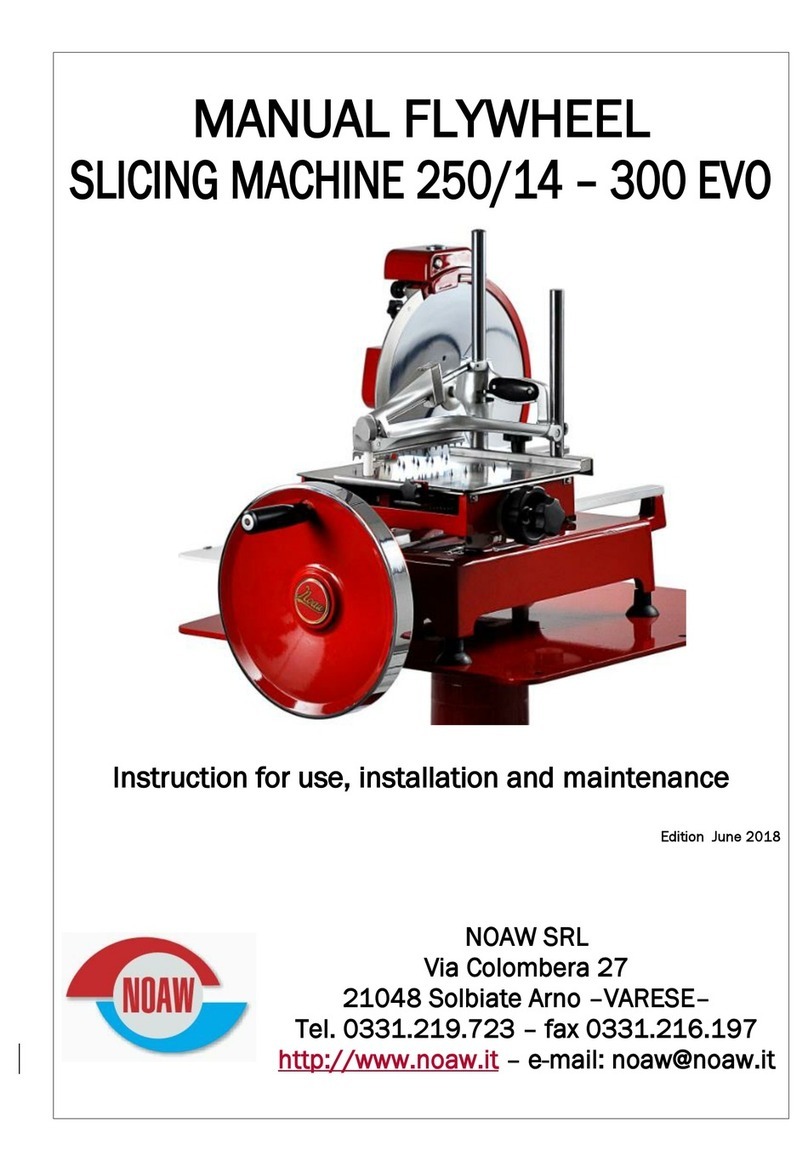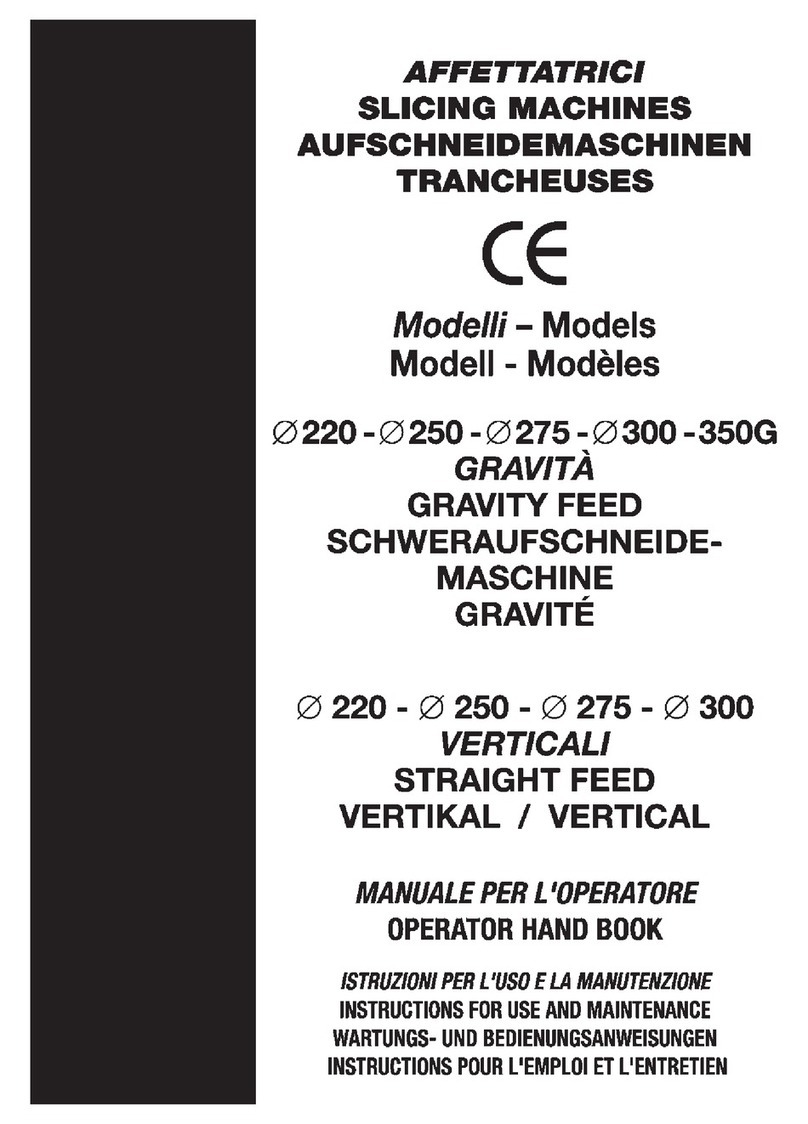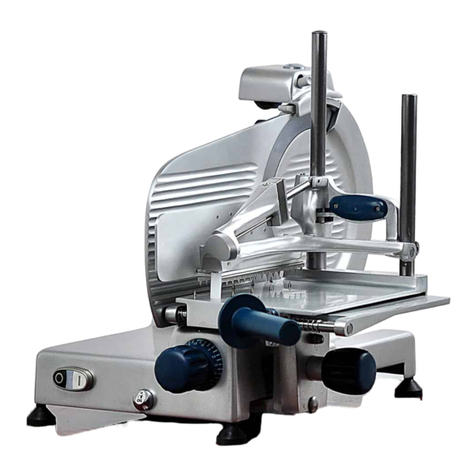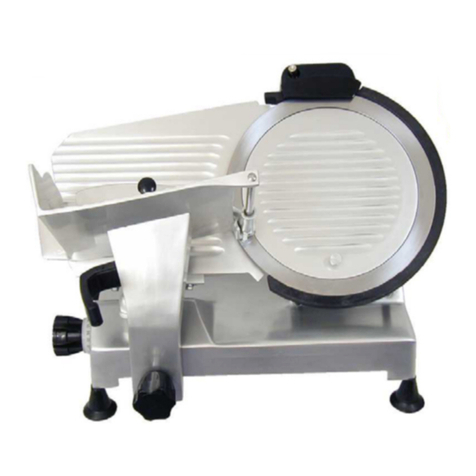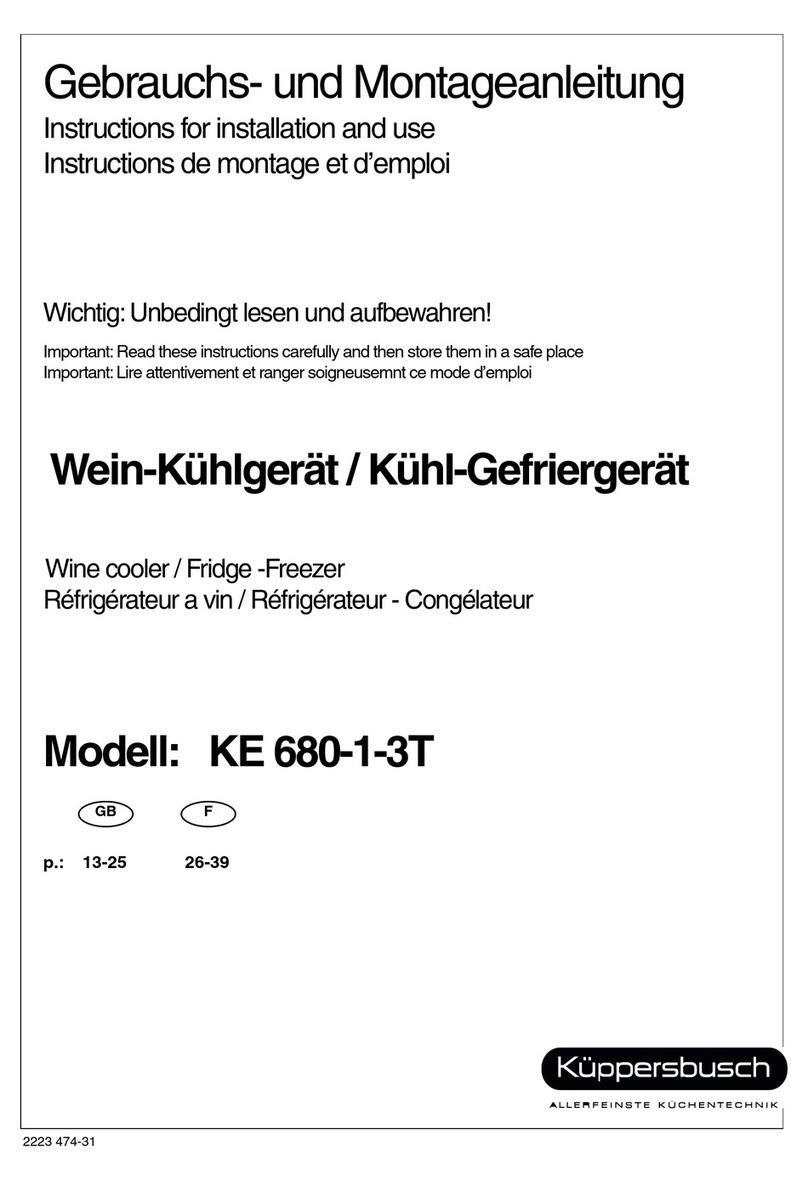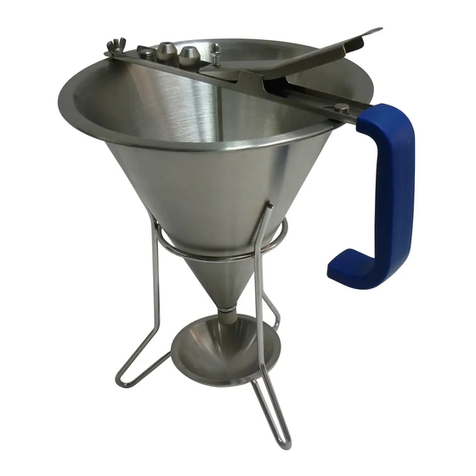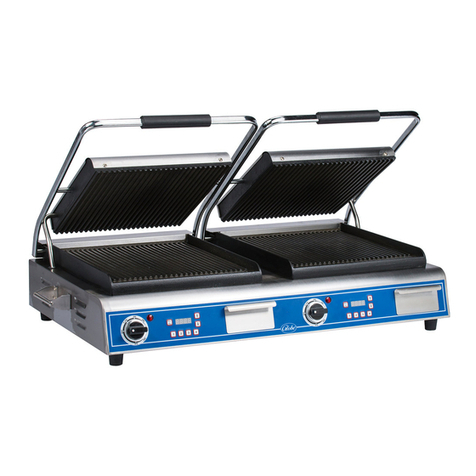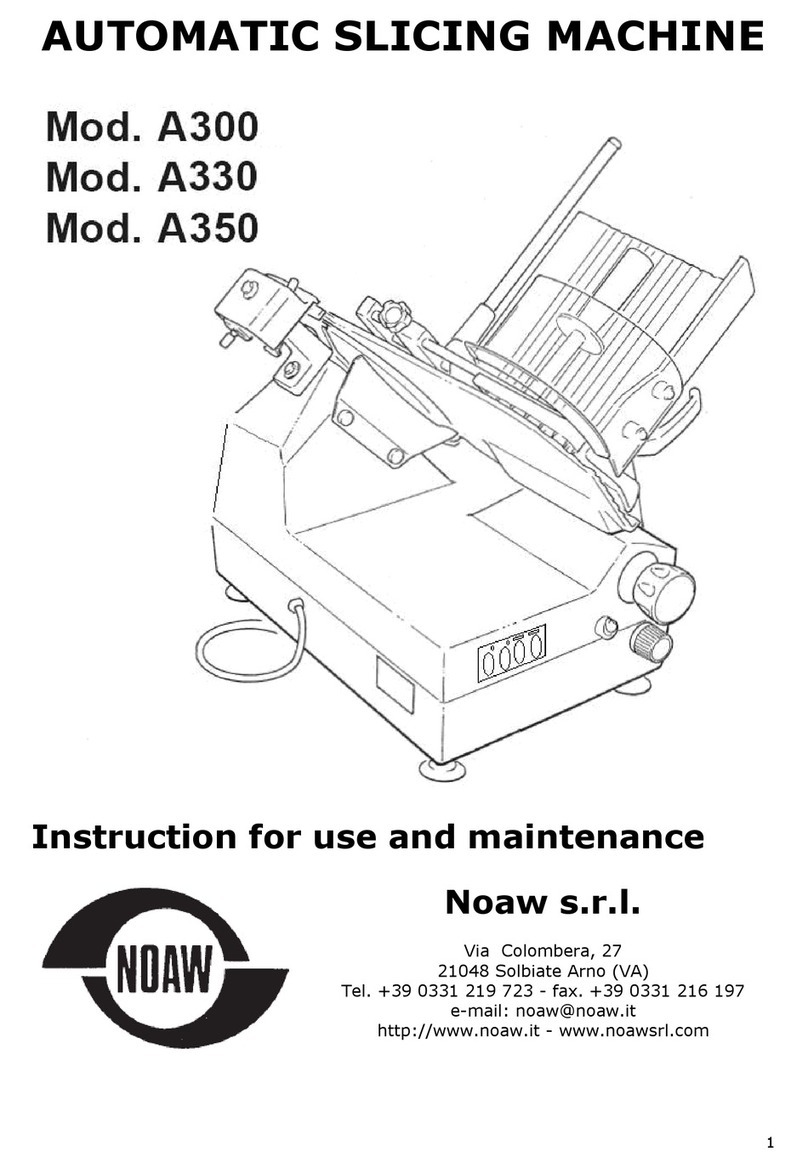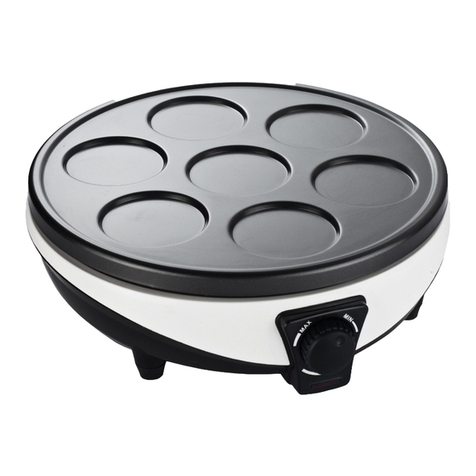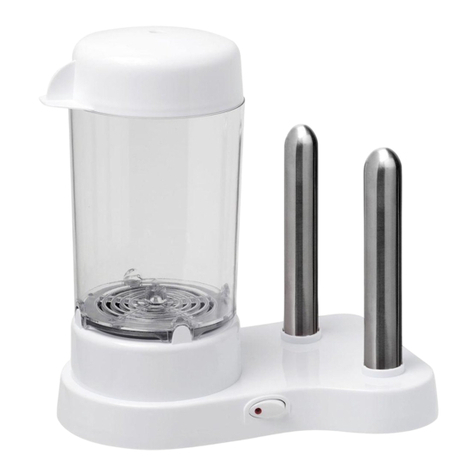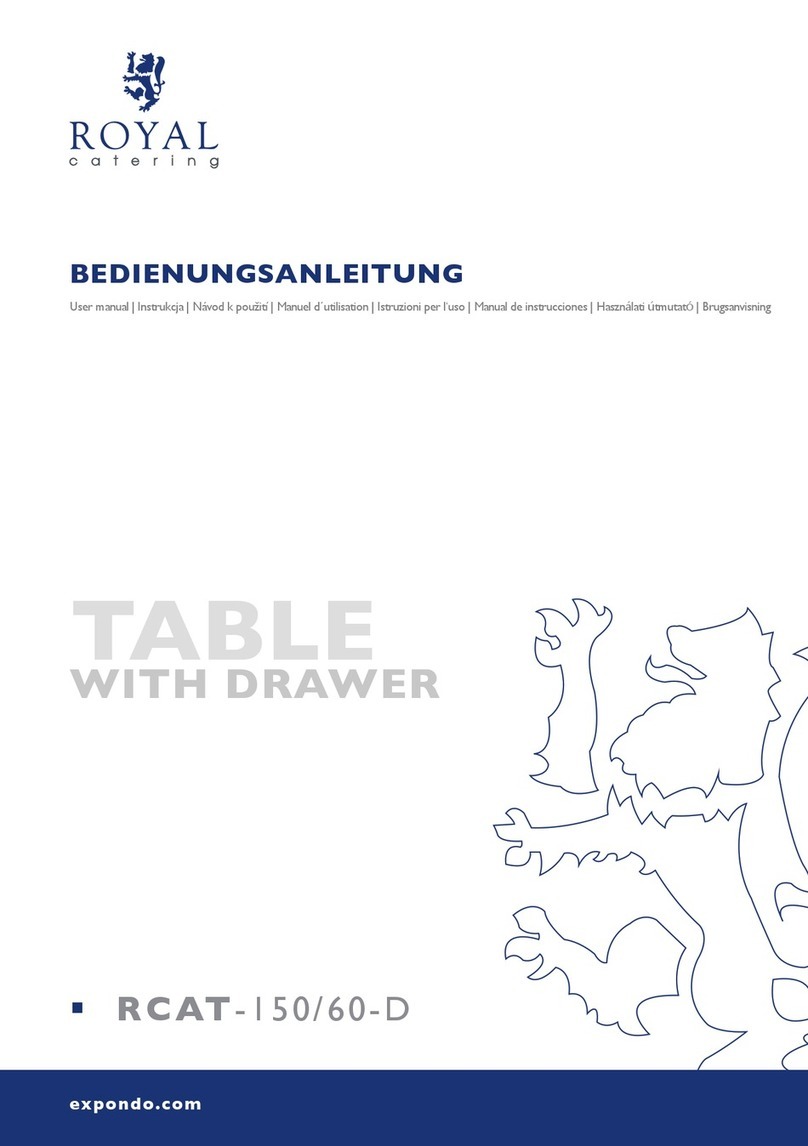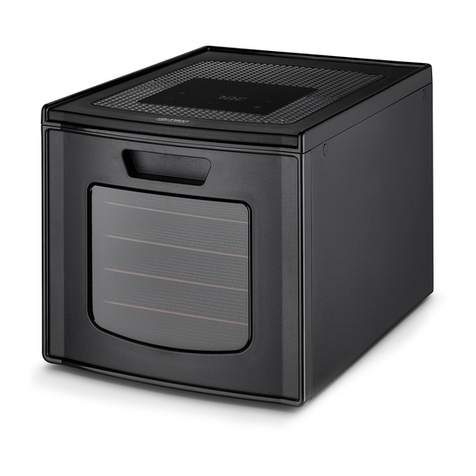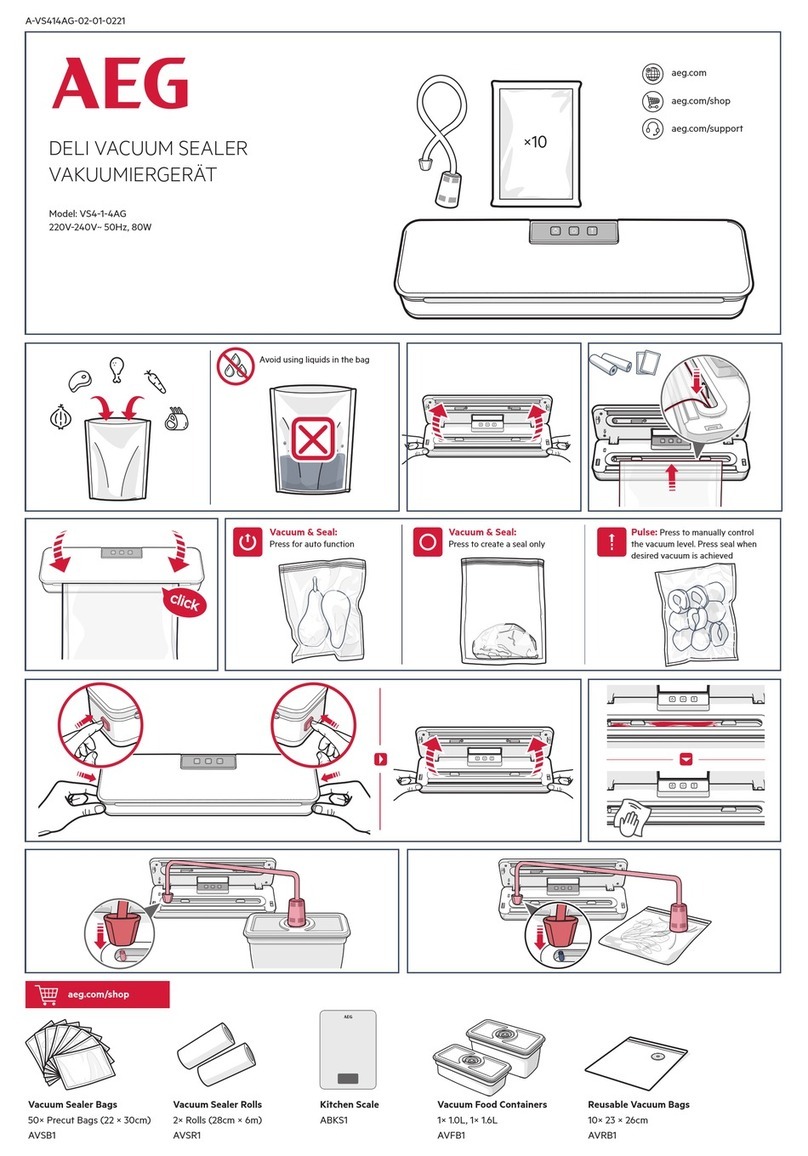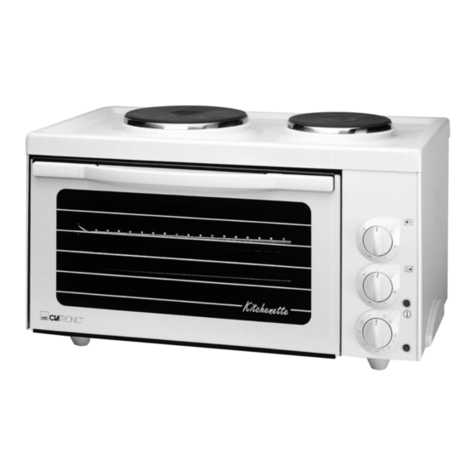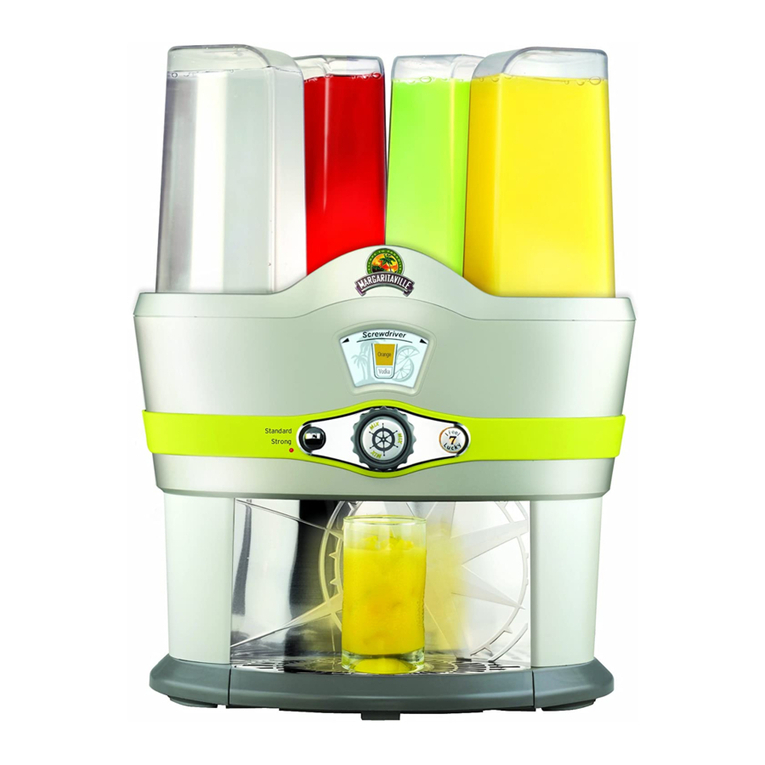Installation, use and maintenance NS300M –NS320M
2
1. INTRODUCTION
1.1 PURPOSE OF THE MANUAL
This publication contains all the information
necessary for the installation, use and maintenance
of the manual flywheel slicing machines to be used
for food, with circular blade, models NS300M and
NS320M.
The purpose of this manual is to allow the user,
above all the direct user, to take every precaution
and arrange all human and material means
necessary for a safe and lengthy use of these
machines.
1.2 KEEPING THE MANUAL
This manual must be given to the person who will
use and maintain the machines and this person will
keep the manual in a safe and dry place, ready to be
used.
We recommend that a copy be kept on file.
For any correspondence with the manufacturer or
authorised personnel, please refer to the
information on the plate and the machine serial
number.
The manual must be kept for the entire life of the
machine and in case of need (ex. any damage to
even a part of the manual that makes consulting it
difficult) the user must acquire a new copy
exclusively from the manufacturer.
The user must let the manufacturer know the
address of any new owner of the machine.
1.3 USE OF THE MACHINE
The use and configurations of the machine are the
only ones allowed by the manufacturer; do not try to
use the machine differently from the indications.
The machines are to be used for cutting only food
products of the type and size indicated in the
following paragraphs.
The manufacturer declines all responsibility derived
from an improper use or use by personnel who has
not read and fully understood the contents of this
manual; changes and/or repairs carried out on one’s
own; the use of spare parts that are not original or
not specific for the type of machine.
For any explanation or doubts on the contents of this
manual, please contact immediately the
manufacturer or an authorised technical assistance
service and quote the paragraph number of the
required subject.
2. GENERAL INFORMATION
2.1 MACHINE LIMITS, SAFETY REGULATIONS
The machine has been designed and made to slice
food products of the type and size as indicated in
paragraphs 3.1, 3.2, and 3.4.
Environmental conditions for using the machine
The operating environment must have the following
characteristics:
-Temperature.............................. ….da -5°C a +40 °C
-Relative humidity......................................... max. 95%
The machine cannot be used in open areas and/or
exposed to atmospheric agents and in places with
fumes, smoke or corrosive and/or abrasive dust,
with the risk of fire or explosion and in any case
where the use of antideflagrating components are
prescribed.
General safety regulations
The slicing machine must be used only by personnel
who has carefully read the contents of this manual.
The operators must be over 18 years of age, in
perfect mental and physical conditions, have the
right attitude and capacity (with the necessary
knowledge for manoeuvring and normal
maintenance of simple mechanical and electrical
components).
For a safe use of the machine follow the
instructions below:
▪Install the machine according to the
instructions in the paragraph “Installation”;
▪Install the machine so that it is far from
people who must not use it, especially
children;
▪Do not be distracted while using the machine;
▪Do not wear loose clothing or open sleeves, if
necessary, use headgear to keep hair out of
the way;
▪Do not let anyone come close to the machine
while in use;
▪Do not remove, cover or change the plates
that are on the machine and, if they are
damaged, replace them immediately;
▪Do not remove the protective devices and do
not change or exclude the mechanical
protective devices;














